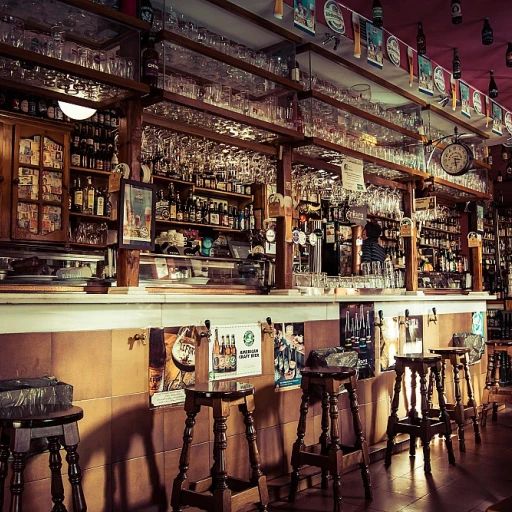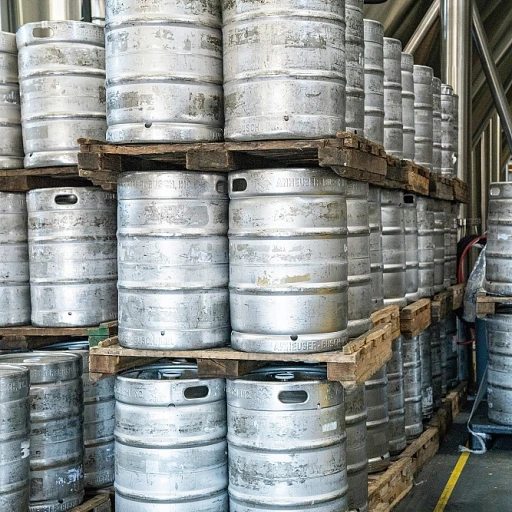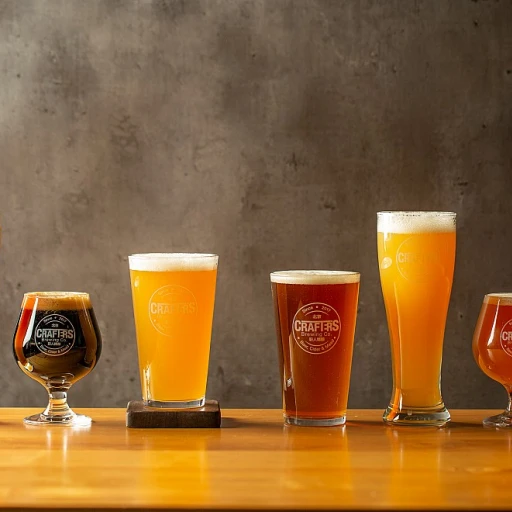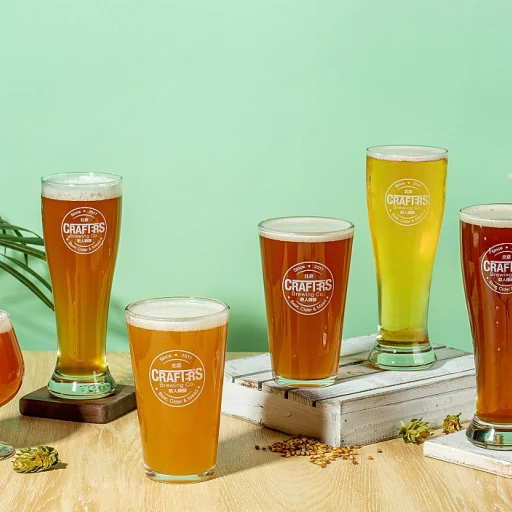A Brief History of Porters and Stouts
The Origins of Porters and Stouts
The story of porter and stout beers is deeply intertwined, with their historical roots tracing back to England. Surprisingly, one originates from the other, giving rise to two distinct yet closely related styles.
Porters first emerged in the early days of the industrial revolution, driven by the thirsty needs of manual laborers working along the bustling banks of the River Thames. These hearty, dark beers were brewed with a blend of roasted malts, lending them a robust and smoky flavor profile, which was both satisfying and fortifying. With the advent of London as a brewing hub, porters quickly gained popularity beyond the capital city, leading to innovative brewing methods that tweaked the flavors to meet varying regional palates.
In the world of brewing, 'stout' initially signified a stronger version of porter. These beers were characterized by a higher alcohol content and, over time, developed a more pronounced roasted malt flavor. As brewing techniques evolved, so did the distinction between porters and stouts, resulting in an array of unique brews across the world. The modern distinctions in their flavor profiles and aroma owe much to the regional ingredients and brewing technologies that have been developed over the years.
For more on how caramelized malts are a game-changer in the brewing process, you might find this
article on dark beers brewed with caramelized malt beneficial. The interplay of these malts has greatly contributed to the evolution of porters and stouts, especially when it comes to the variations we'll explore later, and their enduring legacy in today's craft beer industry.
Reading further will unravel how these historic beers have developed distinct flavors, styles, and tasting experiences that have captured the hearts of beer enthusiasts worldwide.
Flavor Profiles: What Sets Them Apart
Key Differences in Taste and Aroma
When it comes to flavor profiles, it's essential to understand what sets porters and stouts apart in the sensory experience. The distinction lies in the subtle nuances of taste and aroma that beer enthusiasts often relish.
Porters are known for their smooth, medium-bodied nature. They typically boast a rich malt flavor with hints of caramel, toffee, and chocolate. The malt character in porters is slightly less assertive compared to stouts and often features a roasted quality that is more balanced. Their finish is generally softer on the palate, making them approachable for those new to dark beers. For a closer look at the varieties of dark beer, check out this
comprehensive guide.
Stouts, on the other hand, are recognized for their full-bodied and robust character. They are often characterized by a strong roasted flavor, with notes of coffee, dark chocolate, and occasionally even a hint of sweetness from lactose sugars in some milk stouts. The roasted barley used in the brewing process is what imparts that signature deep flavor, finishing with a dry or sometimes creamy sensation.
While both styles share a common ancestry, it's the intensity of roast and the variety of roasted malts used in brewing that creates these delightful differences in taste and aroma. Whether you prefer the subtlety of porters or the boldness of stouts, both offer a rich tapestry of flavors to explore.
Popular Styles and Variations
Exploring Diverse Styles and Creative Variations
When it comes to porters and stouts, a wide range of styles and variations offer beer enthusiasts the opportunity to explore their distinct characteristics. Let's delve into some of the popular styles and unique adaptations of these beloved dark beers.
- Baltic Porter: Brewed with lager yeast, Baltic porters showcase a smooth texture and rich flavor profile with notes of chocolate and dark fruit. They are typically higher in alcohol content, making them a warming choice for cooler months.
- Imperial Stout: Known for its robust and intense flavors, an imperial stout offers aromas of roasted coffee, dark chocolate, and even dark fruits. These stouts boast a higher alcohol by volume (ABV) and a thicker mouthfeel, providing a hearty experience.
- Oatmeal Stout: Adding oatmeal to the mash lends this stout a creamy, velvety mouthfeel, enhancing its smoothness. Oatmeal stouts often present a rounded flavor with hints of nutty, roasty, and chocolate notes.
- Milk Stout (Sweet Stout): This style incorporates lactose, a type of sugar that yeast can't ferment, resulting in a slightly sweeter finish. Milk stouts are cherished for their full-bodied, dessert-like qualities, often reminiscent of chocolate shakes.
- American Porter: Embracing a bold approach, American porters frequently highlight the use of hops, offering bitterness alongside the roasty and chocolaty flavors. These brews can be a vibrant interpretation, offering modern twists.
Craft breweries have also become more experimental, merging traditional brewing techniques with new and exciting ingredients. For instance, there's a growing interest in adding different spices, fruits, and even barrel aging to create beers with fascinating and unconventional flavor profiles. With such a wealth of diversity, enthusiasts might appreciate tasting new creations while also embracing the classic offerings. Find more insights about these bold flavors in this
in-depth exploration.
Tasting Tips for Porters and Stouts
Mastering the Art of Tasting
Tasting porters and stouts requires an attentive palate, as the nuanced flavors distinguish these two dark beer styles. Here are some key tips on how to enjoy your tasting experience:
- Temperature Matters: Serve both porters and stouts slightly warmer than you would lighter beers, around 45-55°F. This allows their complex malt flavors to fully express themselves.
- Glassware Choice: Utilize a tulip or a snifter glass to trap the rich aromas. Swirling the beer will release notes of coffee, chocolate, and roasted malt.
- Visual Examination: Take a moment to observe the beer's appearance. Porters tend to be slightly lighter and clearer, while stouts are often opaque with a thicker head.
- Savor the Aroma: Before tasting, inhale deeply to detect the aromatic differences. Porters often provide a roasted malt aroma with hints of caramel, while stouts give off stronger notes of coffee and chocolate.
- Taste and Compare: Keep your first sip small, allowing it to roll over your tongue. Feel the texture – stouts generally have a thicker, creamier body, while porters might be drier. Note any lingering aftertaste, which can reveal additional layers of flavor.
- Pairing Possibilities: Pair these beers with complementary foods. Porters match well with BBQ or grilled meats, while stouts go wonderfully with rich desserts like chocolate cake or vanilla ice cream.
The more you practice these tasting techniques, the better you'll become at identifying the unique characteristics that set porters and stouts apart from each other. Whether you're a novice or a seasoned beer enthusiast, these insights will enrich your appreciation for both styles. Enjoy the journey as you explore the delightful world of dark beer.
Current Trends and Innovations
Exploring Emerging Beer Styles and Brewer Preferences
The world of porters and stouts is constantly evolving, with trends and innovations shaping how these brews are enjoyed today. Here are some current trends and innovations in the beer industry that are influencing the popularity of these dark, flavorful brews:
- Barrel-Aged Brews: Many breweries experiment with barrel-aging their porters and stouts. Aging in whiskey or bourbon barrels infuses the brew with complex flavors, making these beverages particularly appealing to those looking for a unique tasting experience.
- Incorporating Unique Ingredients: Brewers are getting creative by incorporating new ingredients such as coffee, chili peppers, vanilla, and even exotic fruits. These additions can enrich the chocolatey or roasted notes frequently found in stouts and porters, leading to richer and more intricate taste profiles.
- Sessionable Porters and Stouts: Given the historical richness of these beers, they traditionally had higher alcohol content. However, there's now a growing trend towards creating more sessionable styles that allow people to enjoy them without the heaviness of higher alcohol percentages.
- Sustainability and Craftsmanship: Craft beer enthusiasts increasingly value sustainability and craftsmanship. Brewers who produce eco-friendly stouts and porters or depend on local ingredients are gaining popularity among consumers who are environmentally aware.
- Collaboration Brews: Brewers often collaborate with other breweries or local businesses (such as coffee roasters or chocolatiers) to create innovative twists on traditional beer styles, resulting in exciting new porters and stouts.
Keeping an eye on these trends may lead you to stumble upon your new favorite beer style. As brewers experiment more and expand the range of what's possible, the lines between classic porters and stouts continue to blur, offering endless opportunities for beer enthusiasts and innovators alike.














